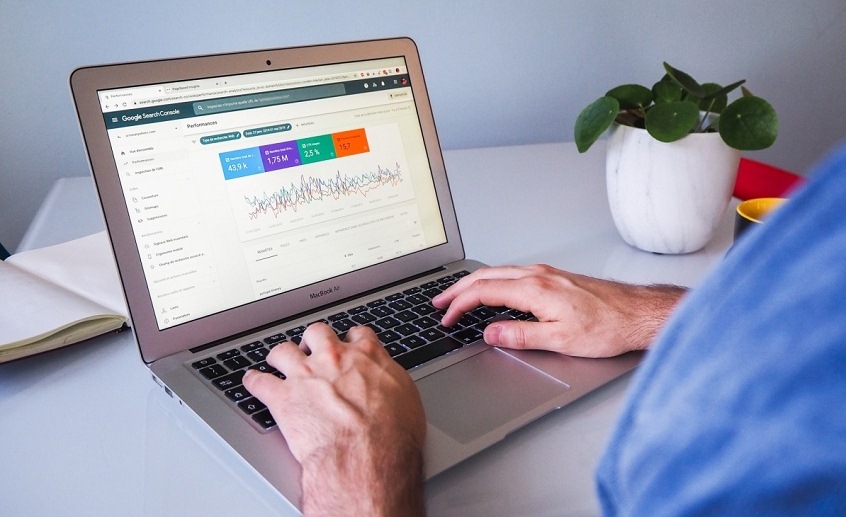Search engine ranking and web traffic is the constant worry of eCommerce organizations. There is a lot to search engine optimization. From image optimization to keywords placement, web design, and so on—there are a number of things that affect your website’s ranking and traffic. One of such things is to understand the ranking policies of the search engines you are optimizing for. Being the ‘most used’ of them, Google must be the focal point of your SEO strategies. This is why it is important to understand the factors that Google considers when sending traffic to your website. In this article, we’re going to help you with just that.
The number of visitors your website receives determines the success of your SEO campaign. Moreover, it also greatly affects your conversion rate– being the initial stage of your conversion funnel. You may be putting a lot of effort into optimizing your website for Google. However, it can all go in vain if you don’t first understand what it takes into consideration when sending traffic to your website.
Hence, to make sure that you receive good web traffic, it is important to understand these factors. The list below will help you with just that.
Top 7 factors affecting web traffic on Google

#1. Indexing
If you are unfamiliar with it— whenever Google comes to learn of a web page, the Googlebot crawls it to understand and analyze its content. Based on that, it stores the web page in what is called ‘Google Index’. This is indexing in a nutshell.
To rank on search engines and receive web traffic, it is important for a web page to first be properly indexed by Google. Many a time, a page faces traffic issues due to indexing issues. Hence, indexing is one of the key factors determining traffic on your website.
#2. Site updates
Certain site updates can also affect your website traffics. Some of such updates can be:
- Modifying on-page copy
- Website overhaul
- Site migration
If you have reworked your site in any of these ways, it is possible that you face traffic fluctuations. In such a case, it is important to make sure that Googlebot re-crawls and re-indexes your updated pages. It can take up a few weeks for your website to regain its usual traffic.
#3. Responsiveness of web design
One of the things that Google takes into consideration is the responsiveness of your website’s design. Some key features of a site with responsive web design are:
- Renders well on a variety of devices (desktops, mobile phones, tablets, etc.)
- Enables a smooth user experience
- Has a user-friendly interface
- No retargeting
These are some of the basics of a responsive web design. Since it is one important visibility factor, it plays a great role in determining web traffic.
#4. Content
Why are visitors coming to your website? Well primarily for the content. Therefore, it is important to make sure that your content provides value to your visitors.
Talking about how it affects your web traffic— Google wants to make sure that the results it shows to its users provide content that reflects high levels of Expertise, Authority, and Trustworthiness—or what it calls E.A.T.
This explains why content marketing experts make it a point to follow the E.A.T. criteria. Therefore, the quality of your content and its compliance with the E.A.T. criteria plays a big role in determining how it sends traffic to your website.
#5. Dwell time
Dwell time signifies the amount of time a visitor spends engaging with your website after he lands on it till when he exits. A high dwell time implies that visitors are having a great time engaging with your website. On the other hand, low dwell time can indicate a number of problems on your website.
Google observes this behavior of users and manages your visibility accordingly. Therefore, if you want Google to send more traffic to your website, you should work on increasing the dwell time on your website.
#6. Bounce rate
The main difference between dwell time and bounce rate is that in the case of the latter, the visitors leave your website without engaging with it even once. Suppose a person lands on your website, reads a 5-minutes long article, and leaves without clicking on any internal linking elements. This will add to your website’s bounce rate.
Too low and too high of a bounce rate can be bad for a website. It tells Google that visitors find nothing of value on your website or don’t find it good enough to engage with. Based on that, Google restricts your visibility. This further goes on to affect your website traffic.
#7. Page speed and website loading
The loading speed of your webpages is another factor impacting your online traffic. It’s been found that visitors spend only up to half a minute for allowing it to load. If your website takes too long to load or if your page speed is too low, you could be losing valuable customers.
But that’s just one thing.
Google also penalizes those websites that take too long to load. Therefore, it is important to make sure that you maintain high page speed and loading on your website. This way, you will be able to maintain your visibility on Google and enjoy good traffic.
Wrapping up
One important task of search engine optimization is to understand what Google takes into consideration when sending traffic to your website. Your web traffic majorly depends upon your Google visibility and ranking. Hence, you will find that the factors affecting your web traffics are more or less those affecting your SEO. Google simply wants its users to visit those sites from where they can derive the most value. Hence, it all comes down to maintaining the quality of your site’s content and technical aspects.
Leave a comment and allow us to know your thoughts on this one. For more enriching digital marketing content, check out our blog now!



